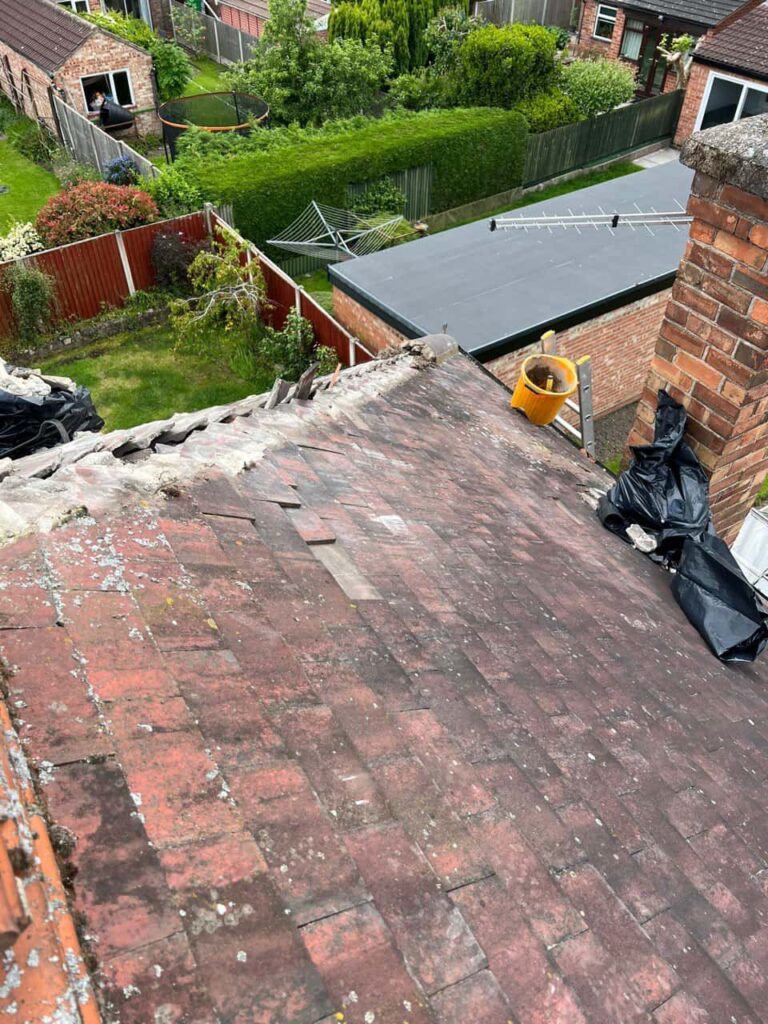Flat roofs are a popular choice for residential and commercial properties due to their modern appearance and space-saving advantages. However, they are particularly vulnerable to weather-related wear and tear over time. Understanding how various weather conditions affect flat roofing can help property owners in Haverhill take timely action to avoid costly repairs. At Haverhill Roofing Repairs, we regularly address damage caused by harsh weather conditions and recommend proactive maintenance to extend the life of your flat roof.
Why Flat Roofs Are More Susceptible to Weather Damage
Unlike pitched roofs, flat roofs lack a significant slope, which means water, snow, and debris can settle on the surface rather than run off. This creates greater potential for structural issues, leaks, and material deterioration over time.
Weather Conditions That Commonly Impact Flat Roofs
Heavy Rainfall and Ponding Water
In areas like Haverhill where rain is frequent, poor drainage can lead to water pooling on the surface. If water remains for extended periods, it can:
- Weaken waterproof membranes
- Promote moss and algae growth
- Lead to internal leaks and ceiling damage
Ensuring proper drainage and regular inspection is crucial to prevent long-term damage.
Freezing Temperatures and Frost
During colder months, freeze-thaw cycles can affect the roof’s integrity. Water that seeps into cracks can freeze and expand, causing:
- Membrane splits
- Surface blistering
- Structural weakening
Timely repair of minor cracks and proper insulation can reduce the risks associated with frost.
High Winds
Flat roofs may appear less exposed to wind uplift, but they can still suffer:
- Edge lifting or membrane detachment
- Displacement of protective layers
- Damage to flashing and roof joints
Securing the roof perimeter and inspecting after storms is vital for maintaining wind resistance.
UV Exposure and Heat
Extended exposure to sunlight can degrade flat roof materials, especially bitumen and felt surfaces. UV damage typically leads to:
- Brittleness and cracking
- Fading or blistering of the top layer
- Reduced waterproofing performance
Using UV-resistant coatings and scheduling periodic surface treatments can mitigate sun-related damage.
Snow and Ice Accumulation
Although not as frequent in Haverhill, snow build-up can still cause flat roofs to sag under pressure. In severe cases, this leads to:
- Structural stress and bowing
- Water ingress from melting snow
- Collapse in poorly supported roofs
Preventative roof strengthening and seasonal inspections can help address this hazard.
Warning Signs of Weather Damage on Flat Roofs
Property owners should regularly look for signs such as:
- Water stains on ceilings or walls
- Bubbling or lifting of the roofing surface
- Visible cracks or exposed seams
- Pools of standing water after rain
Early detection and repair from specialists like Haverhill Roofing Repairs can prevent these issues from worsening.
Conclusion
Flat roofs offer many benefits, but their exposure to the elements makes them particularly vulnerable to weather damage. By understanding the common hazards and responding quickly to the first signs of wear, you can protect your property and extend the lifespan of your roofing system. If you suspect weather-related damage or want a professional inspection, contact Haverhill Roofing Repairs. We provide trusted roofing services throughout Haverhill, Suffolk and are ready to help safeguard your flat roof against the British climate.
Call us on: 01440 840 497
Click here to find out more about Haverhill Roofing Repairs
Click here to complete our contact form and see how we can help with your roofing needs.

